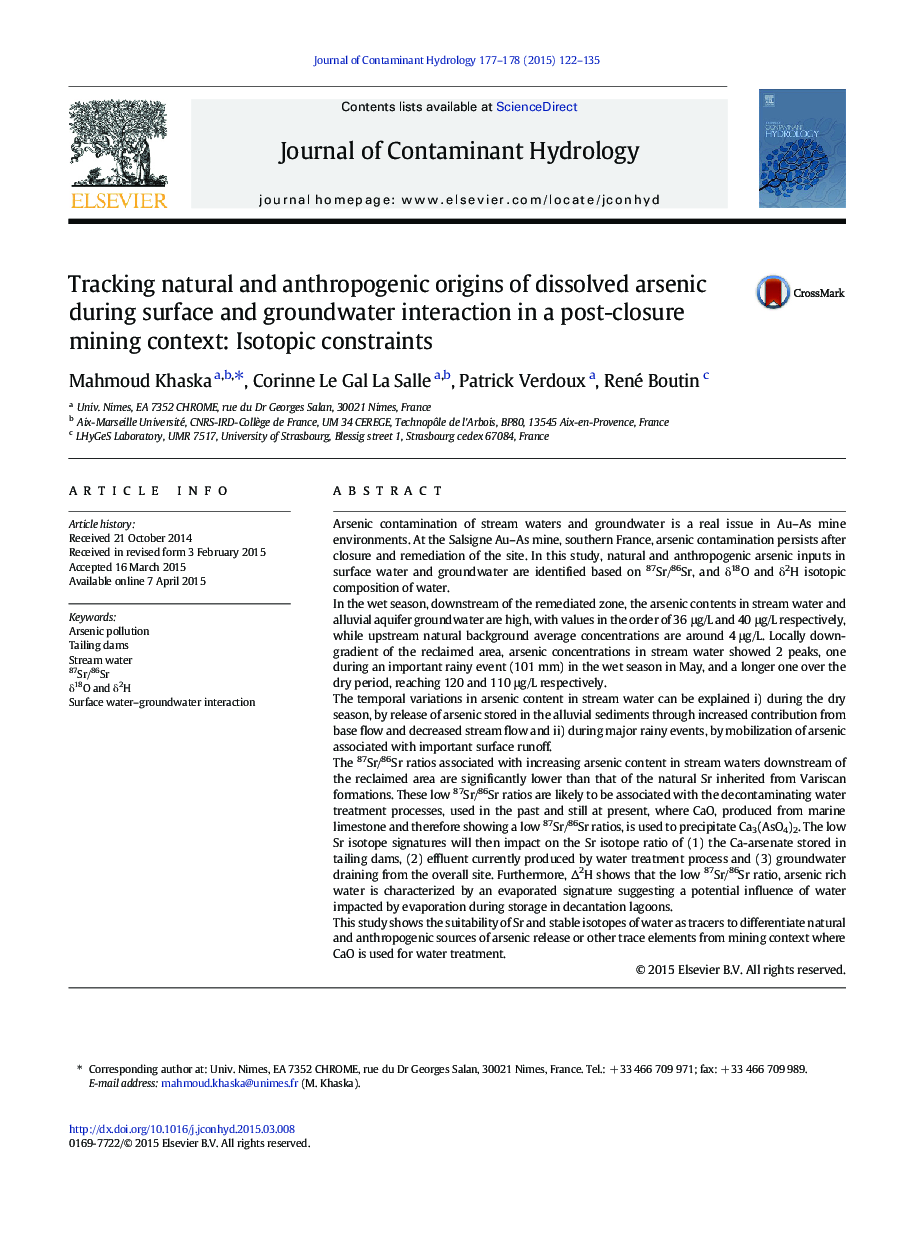| کد مقاله | کد نشریه | سال انتشار | مقاله انگلیسی | نسخه تمام متن |
|---|---|---|---|---|
| 4546442 | 1627032 | 2015 | 14 صفحه PDF | دانلود رایگان |
• Strontium isotope was used as a proxy for As contamination
• Arsenic increase in surface water is related to rainy events and low flow conditions
• Anthropogenic origin of As persist after mine closure and decommissioning
• Transport of As during surface-groundwater interaction was conceptually modeled
• Mining drainage water treatment constrain the Sr imprint of anthropogenic As
Arsenic contamination of stream waters and groundwater is a real issue in Au–As mine environments. At the Salsigne Au–As mine, southern France, arsenic contamination persists after closure and remediation of the site. In this study, natural and anthropogenic arsenic inputs in surface water and groundwater are identified based on 87Sr/86Sr, and δ18O and δ2H isotopic composition of water.In the wet season, downstream of the remediated zone, the arsenic contents in stream water and alluvial aquifer groundwater are high, with values in the order of 36 μg/L and 40 μg/L respectively, while upstream natural background average concentrations are around 4 μg/L. Locally down-gradient of the reclaimed area, arsenic concentrations in stream water showed 2 peaks, one during an important rainy event (101 mm) in the wet season in May, and a longer one over the dry period, reaching 120 and 110 μg/L respectively.The temporal variations in arsenic content in stream water can be explained i) during the dry season, by release of arsenic stored in the alluvial sediments through increased contribution from base flow and decreased stream flow and ii) during major rainy events, by mobilization of arsenic associated with important surface runoff.The 87Sr/86Sr ratios associated with increasing arsenic content in stream waters downstream of the reclaimed area are significantly lower than that of the natural Sr inherited from Variscan formations. These low 87Sr/86Sr ratios are likely to be associated with the decontaminating water treatment processes, used in the past and still at present, where CaO, produced from marine limestone and therefore showing a low 87Sr/86Sr ratios, is used to precipitate Ca3(AsO4)2. The low Sr isotope signatures will then impact on the Sr isotope ratio of (1) the Ca-arsenate stored in tailing dams, (2) effluent currently produced by water treatment process and (3) groundwater draining from the overall site. Furthermore, Δ2H shows that the low 87Sr/86Sr ratio, arsenic rich water is characterized by an evaporated signature suggesting a potential influence of water impacted by evaporation during storage in decantation lagoons.This study shows the suitability of Sr and stable isotopes of water as tracers to differentiate natural and anthropogenic sources of arsenic release or other trace elements from mining context where CaO is used for water treatment.
Figure optionsDownload as PowerPoint slide
Journal: Journal of Contaminant Hydrology - Volumes 177–178, June–July 2015, Pages 122–135
